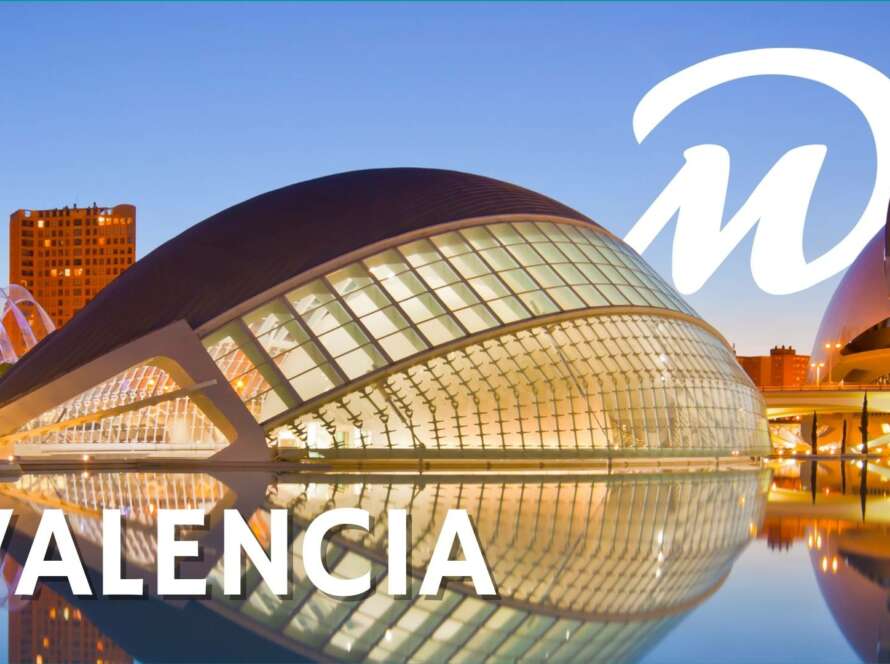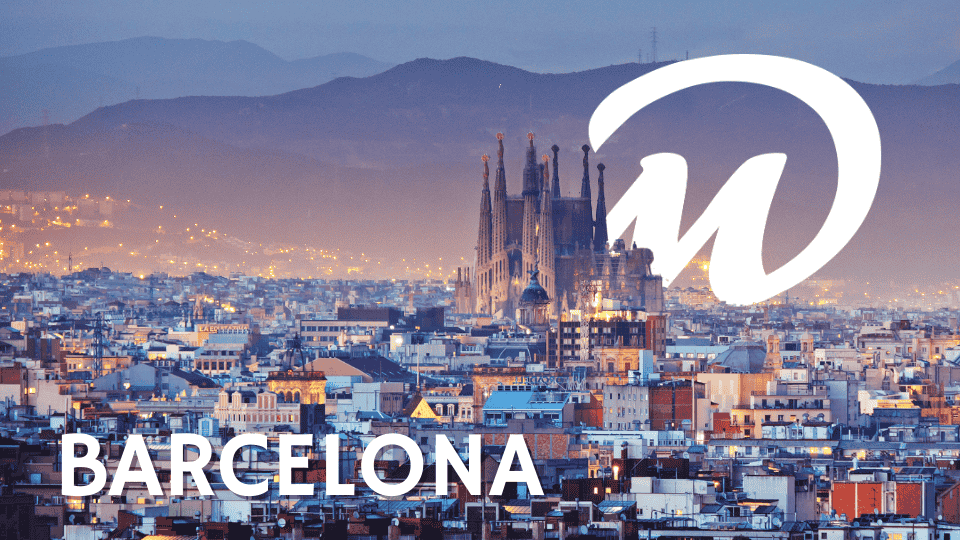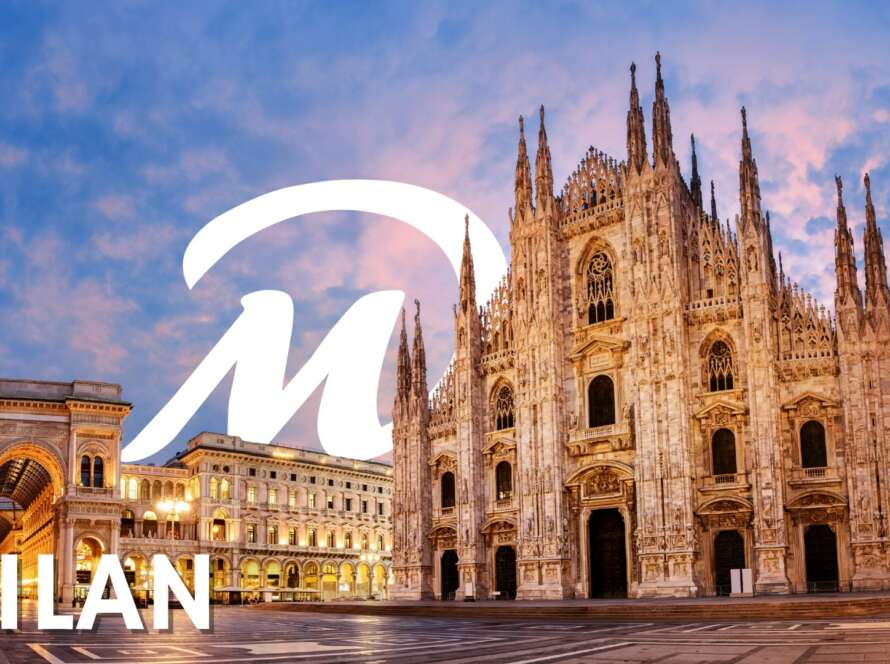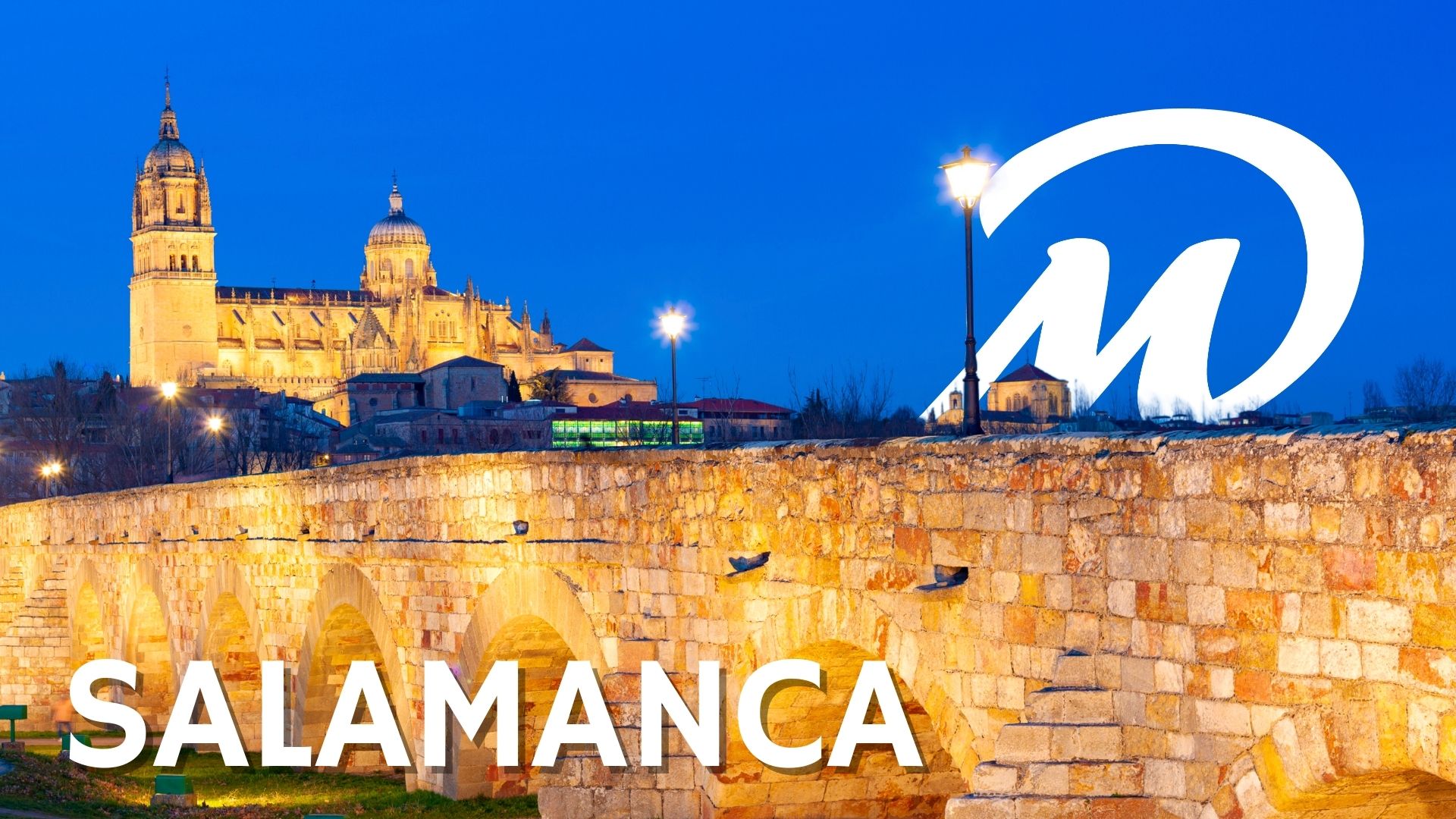Discover the best things to do in Malaga, a city bathed by the Mediterranean and with an incredible history. Make the most of Picasso’s hometown.
⌛ STILL SEARCHING THROUGH BLOGS, OR WOULD YOU RATHER HAVE YOUR MALAGA GUIDE READY TO GO?
The DareMapp app makes it easy. Enjoy the FULL GUIDE ON YOUR PHONE and explore every corner your own way — no schedules, no rush.
Things to do in Malaga. Introduction
Malaga, capital of the Costa del Sol, is a vibrant and cosmopolitan city that offers visitors a wide range of experiences. From its heavenly beaches and warm climate to its rich history and culture, Malaga has something for everyone.
Its rich history is reflected in the Alcazaba and the Roman Theatre. The Picasso Museum pays homage to the most famous local artist. Flower-lined streets lead you to the Cathedral. Savour the essence of Andalusia in its tapas and let yourself be carried away by the rhythm of the flamenco that you can experience in Malaga at any point. If you want to discover the things to do in Malaga, you will see that it is a Mediterranean oasis that invites you to explore its history, culture, beaches, and gastronomy. These are all key things to do in Malaga.
If you combine the sea and culture with a lively atmosphere, the abundant tapas served in its bars, trendy neighbourhoods such as Soho, modern areas like the transformed port, and monuments with centuries of history, the result is an exciting city that anyone would want to visit. Because if everyone says that Malaga is more beautiful than ever, there must be a reason. This makes it one of the best things to do in Malaga.
Things to do in Malaga. Its history
⤵️ Surely you want to have your trip already planned. Want to know how?
With DareMapp, forget about wasting time. Enjoy Malaga at your own pace, with no schedules, thanks to our complete self-guided tour. The whole city, all in one place.
Malaga is a city full of historical corners such as the Alcazaba, one of the largest Arab fortresses in Andalusia, or the Gibralfaro Castle, from where you can get what are probably the best views of the whole city. At the foot of the castle lies the Roman theatre and a historic quarter made for strolling.
Its streets are lined with corners such as the Atarazanas Market where you can have a vermouth and monuments such as the Cathedral, known as “La Manquita”, because of its unfinished right tower. Don’t miss a visit to its roofs, because the experience is unique. We are in the city of Picasso, so in the centre there is also a highly recommended museum dedicated to the painter and it is possible to visit his birthplace.
However, if you are looking for more underground culture, don’t miss the Centro de Arte Contemporáneo, the urban art on the facades or the clubs in the alternative Soho district, great things to do in Malaga.
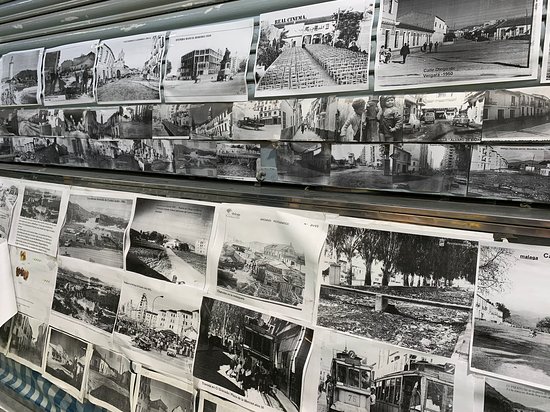
There are several things to do in Malaga that give it its unique touch. For starters, beyond the monuments, it is always a good idea to enjoy a day in the sun on the legendary urban beach of La Malagueta. And if you want to immerse yourself in traditional flavours, you should go to the seaside neighbourhood of Pedregalejo and try the typical grilled sardine skewers.
Returning to La Malagueta, next to it is the Muelle 1, a promenade in the port full of shops and restaurants where it is a pleasure to walk at sunset until you reach the Farola, a lighthouse that is among the symbolical things to do in Malaga and ofc to see.
Other thing to do in Malaga? Undoubtedly its pedestrian street Marqués de Larios, a very lively promenade decorated with flowers and where you must pass at least once on a trip to Malaga. At night, moreover, this area and its surrounding streets become the perfect place to go for tapas in places that are already institutions such as the Bodega El Pimpi and try what an ajoblanco tastes like.
Malaga is also known for its renowned Film Festival, vibrant Holy Week celebrations, and innovative restaurants. But above all, the true essence of the things to do in Malaga lies in exploring its joyful atmosphere and diverse cultural offerings.
Founded by the Phoenicians in the 8th century BC, and christened Malaka, the Andalusian capital of Malaga is one of the oldest cities in Europe. It was a place of great strategic importance for the Roman Empire in the Iberian Peninsula. During this period, it established itself as a thriving medina which was four times the capital of its own kingdom until it was incorporated in 1487 into the Crown of Castile.
Nowadays, Malaga is a notable economic and cultural centre, an important communications hub in the Mediterranean and, thanks to its coastline, a focal point for tourism in the south of Spain. These are all key things to do in Malaga. There’s so much to enjoy, it’s hard to resist!
Things to do in Malaga. Key sites
Join us to discover the key things to do in Malaga.
1. Contemporary Art Centre (CAC)
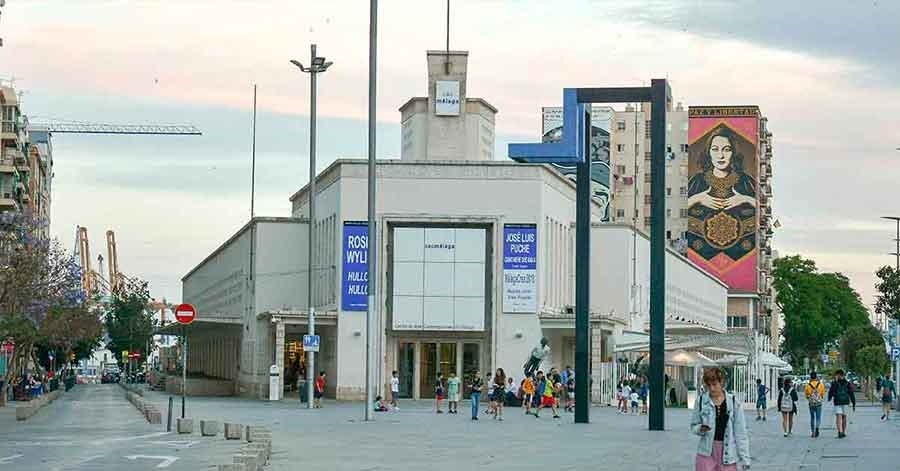
The Contemporary Art Centre is located in the old Wholesale Market, a historic building part of the things to do in Malaga. The museum is dedicated to the dissemination and reflection of contemporary art. Exhibitions, publications, conferences, educational programmes, workshops and seminars are some of the many activities that make the CAC Malaga a living centre, a dynamic, innovative place open to all kinds of artistic and cultural proposals of the international avant-garde.
The permanent collection is constantly evolving, in addition to new acquisitions by the Malaga City Council, owner of the museum, has introduced the system of cession by which private collectors cede their works for a certain period of time.
You can take a journey through the artistic movements and trends of the 20th century, especially from the last decades, from the 1950s to the present day.
The former Wholesale Market is a historic building designed in 1927 by Luis Gutiérrez de Soto, built in 1939. It is a triangular building, with two floors and defined by cubic spaces and straight lines. In 1983 its use as a market was abandoned and later it was proposed to be used as a museum. In 1987, the process to have it declared an Asset of Cultural Interest began. In February 2003 , once the refurbishment was completed, it was opened to the public.
It has a total surface area of 6,000 square metres, of which 2,400 are used for exhibitions and the rest for conferences and other cultural events.
2. Soho district

The Soho neighbourhood in Malaga is a central area and a symbol of urban art and underground culture, made famous by a citizens’ initiative project.
One of the most striking features here is the large graffiti adorning its buildings, showcasing works by internationally renowned artists such as Obey and D*face. Soho is perfect for exploring on foot, as it is very close to Malaga’s main tourist attractions.
The streets are home to independent local businesses with a unique identity, several art and cultural centres like private galleries, artists’ studios, the Alameda Theatre, and the Contemporary Art Centre, alongside ecological and gourmet restaurants, as well as spaces featuring modern, functional street furniture.
On the first Saturday of every month, Soho hosts the “Made in Soho” market, featuring stalls dedicated to design, crafts, visual arts, antiques, and vintage products. This neighbourhood, also known as Barrio de las Artes, is the result of a citizens’ initiative to revitalize the area, now supported by institutional urban planning. If you’re exploring the things to do in Malaga, Soho is an essential stop for anyone interested in modern culture and creativity.
📲 Do you want to keep searching online or start your adventure now? With the DareMapp app, you won’t waste a single minute: YOUR MALAGA TOUR ALREADY ORGANIZED AND AT YOUR OWN PACE.
3. Atarazanas Central Market
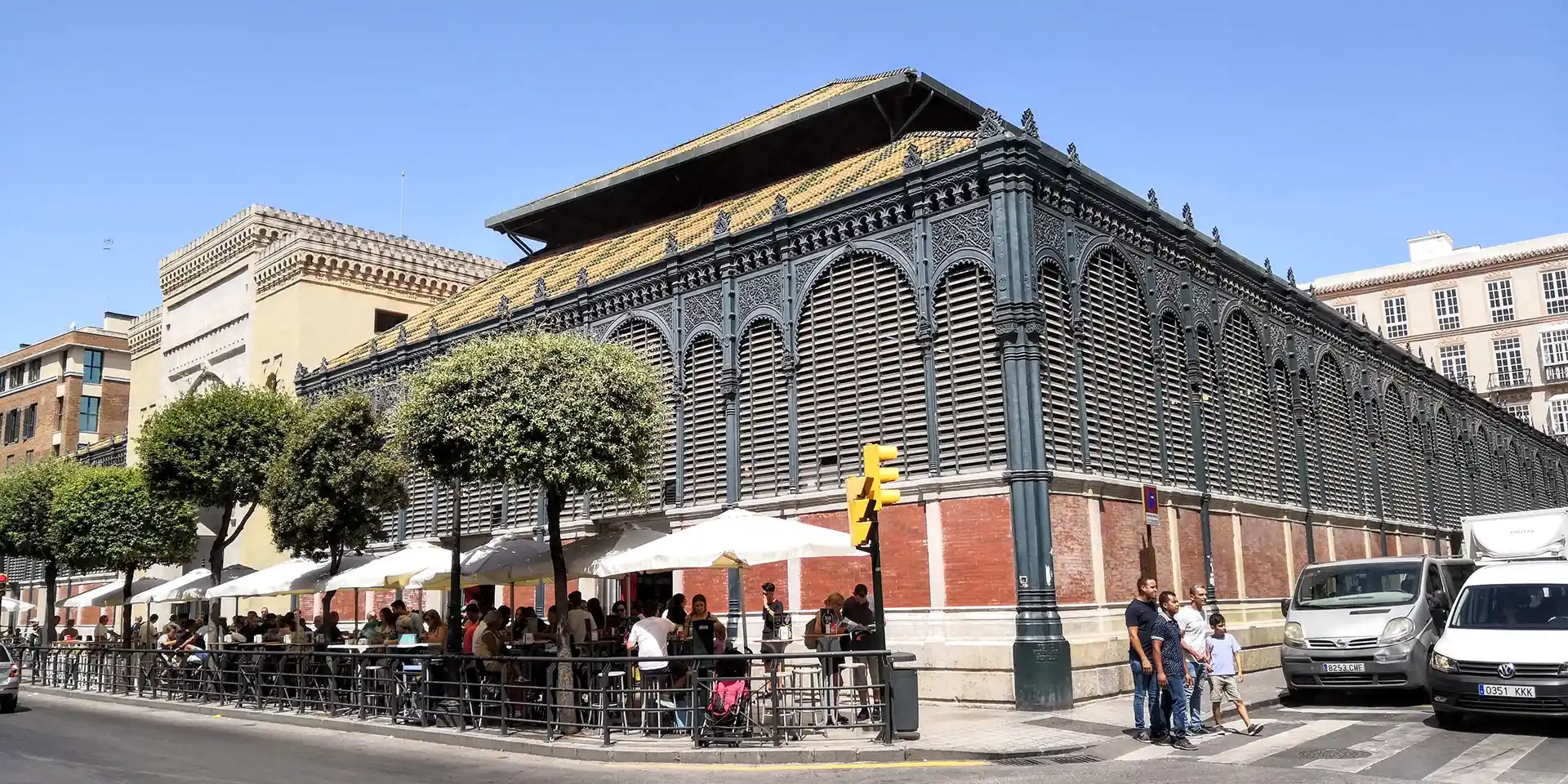
The Atarazanas Market is a historic market located in the heart of the city. An architectural treasure that highlights Malaga’s rich heritage and gastronomy, this market is an essential stop to immerse yourself in the local culture and take the pulse of the city.
With dozens of stalls offering the freshest products, including fish, seafood, organic fruit, and vegetables, the market is also a great place to find souvenirs of the flavours of Malaga, such as traditional oils, sweets, cheeses, sausages, and preserves. It’s the favourite place for locals to enjoy the popular pescaíto frito (fried fish).
The Atarazanas Market, one of the things to do in Malaga, is located on the site of a Nazarite shipyard from the 14th century, when Malaga was part of Al-Andalus. After the Christian conquest of the city, the space served various purposes, including as a warehouse, arsenal, military hospital, and barracks. In 1870, it was demolished and rebuilt according to a project by municipal architect Joaquín Rucoba. Thanks to the intervention of the Academia de Bellas Artes de San Telmo, the old monumental door was preserved, and it can still be seen on the main façade today.
Now, the Atarazanas Market is a fantastic example of 19th-century architecture, and it’s one of the must-see things to do in Malaga, offering both a historical and culinary experience
4. Marqués de Larios Street
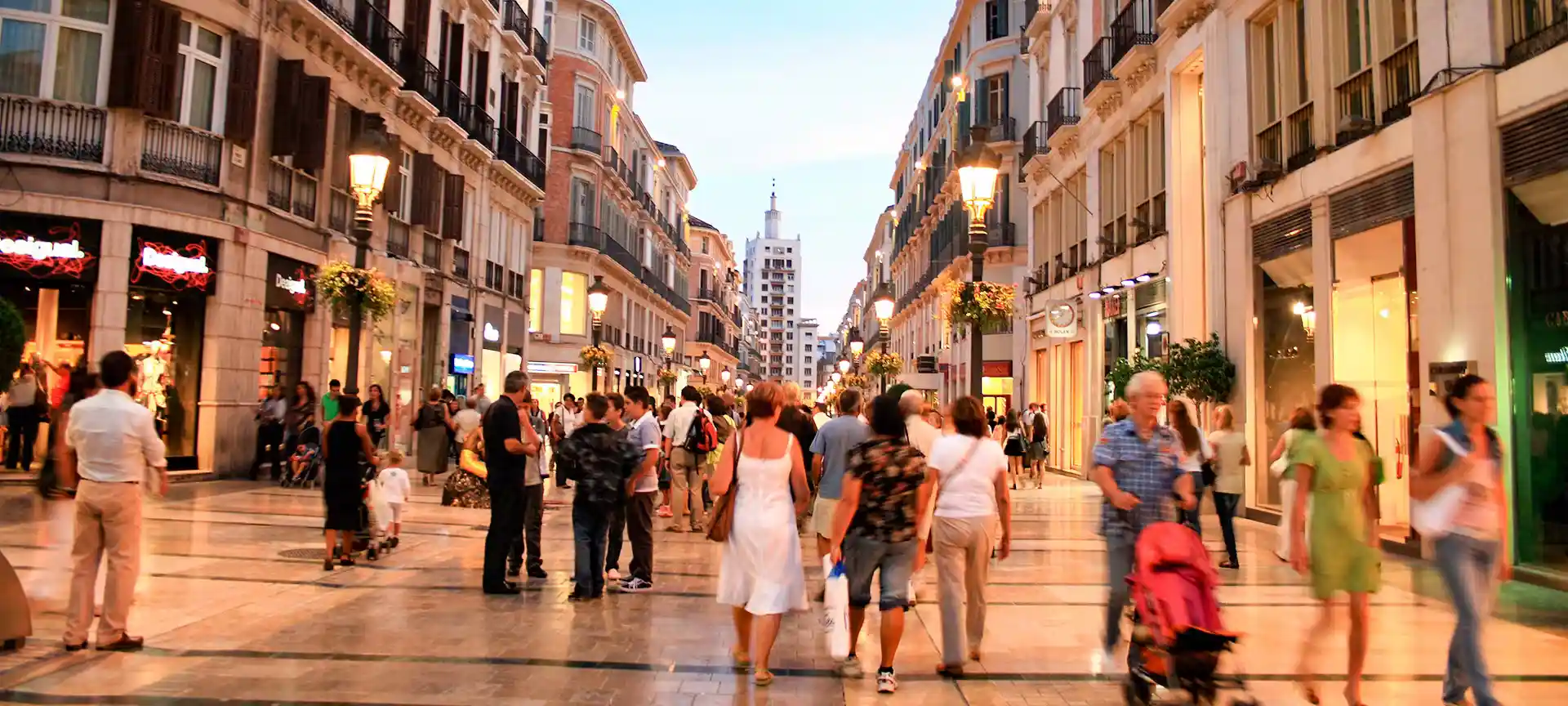
Calle Larios, inaugurated on 27th August 1891, is one of the best things to do in Malaga. Designed by engineer José María Sancha and later modified by Manuel Rivera, this historic street was funded by a joint-stock company, with the majority of shares bought by the Larios family. Its architectural and urban value is clear, with remarkable buildings designed by Eduardo Strachan and Viana-Cárdenas, making it a key point to explore when in the city.
As one of the first shopping streets in Spain, Calle Larios is now pedestrianised, making it perfect for a leisurely stroll to experience the vibrant life of Malaga. Together with Plaza Constitución, it forms a central urban space that has hosted significant events in the city, offering an insight into Malaga’s culture and history. Things to do in Malaga would not be complete without a visit to this iconic street.
5. Cathedral of the Incarnation
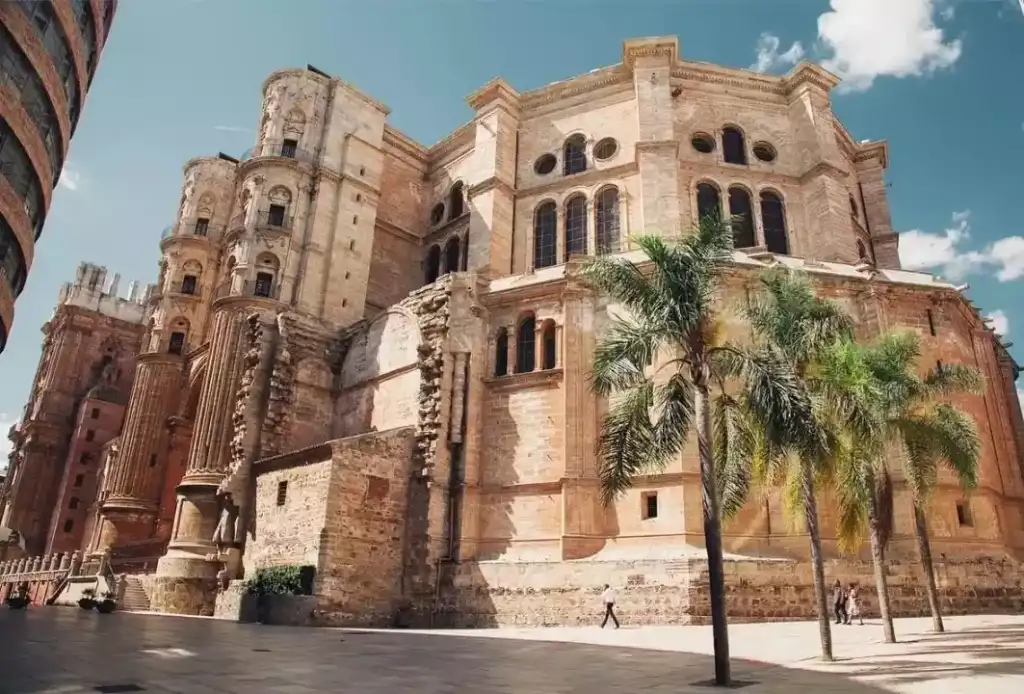
Malaga Cathedral is a must-see landmark and a top visit among the things to do in Malaga. It offers a perfect blend of architectural styles: Gothic in its ground plan, Renaissance in its elevation, and Baroque in the decoration of its façade and roofs. Among the most notable works inside are the stunning choir stalls by Pedro de Mena. The north tower, rising to 84 metres, makes it the second tallest cathedral in Andalusia, after the Giralda in Seville. The south tower, still unfinished, has earned the cathedral the nickname ‘La Manquita’ (the one-armed lady).
Located on the site of the city’s former Mezquita-Aljama, the Cathedral of the Incarnation began its construction in the 16th century and continued through the 17th and 18th centuries, with some interruptions. If you don´t know the things to do in Malaga, this is a great point.
Its grand structure, inspired by the Granada Cathedral, is a key point for things to do in Malaga. As an asset of cultural interest, the cathedral is a prime example of the city’s rich history and architectural diversity. For those visiting, exploring this magnificent building is one of the most iconic things to do in Malaga.
6. Constitution Square
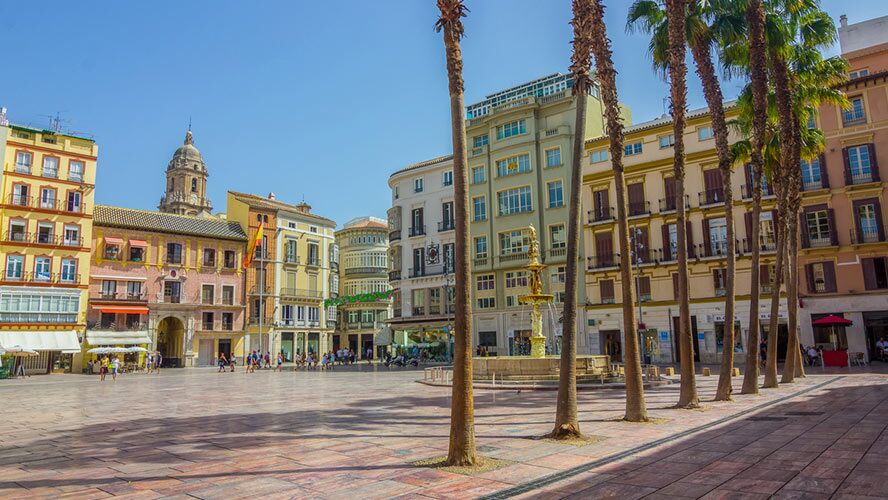
The Plaza de la Constitución square has been the nerve centre of the city’s life since the time of the Reconquest, when it was called Plaza de las Cuatro Calles . It has also had other names such as Plaza Mayor until 1812, when it was renamed Plaza de la Constitución.
Here were located the Town Hall of Malaga until 1869, the Casa del Corregidor, the prison, the Audiencia, the convent of the Augustinian nuns, and even other points of tourist interest such as the Sociedad Económica de Amigos del País (Economic Society of Friends of the Country).
On one of its sides is the Fuente de Génova (Fountain of Genoa) . Casetas de la Feria de Málaga, the authorities’ tribune during Holy Week are some of the great events that this central Malaga square continues to host.
In 2003, this square was pedestrianised alongside Calle Larios, becoming a must-see and a must do visit in the things to do in Malaga on any walking tour of Malaga’s historic centre. It’s a perfect spot to experience the city’s vibrant atmosphere on foot.
7. Carmen Thyssen Museum
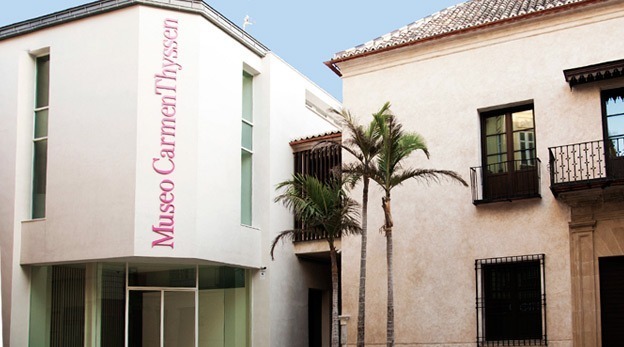
One of the most important things to do in Malaga, is visiting the Museo Carmen Thyssen houses the private collection of Carmen Thyssen-Bornemisza, a wealthy art collector. The museum, which occupies the converted 16th century Palacio de Villalón and an adjoining modern annexe, rewards visitors with a wealth of magnificent works.
The Museo Carmen Thyssen Málaga’s permanent collection houses an extraordinary survey of Spanish painting from the 19th and early 20th centuries, with Andalusian landscape painting and genre scenes taking centre stage. These works form part of Baroness Carmen Thyssen’s most personal collection and make up a group of more than 200 pieces that also includes a carefully chosen selection of Old Masters from the 13th to 18th centuries.
Opened in 2011, the museum spans three floors, showcasing Romantic, Naturalist, and fin-de-siècle art. It also integrates Roman remains discovered beneath the building, adding historical depth to this must-see cultural destination. For art lovers, it is truly one of the top things to do in Malaga.
The old 16th century stately building, the Palacio de Villalón, is the central nucleus of the museum, into which new adjoining buildings have been integrated, resulting in a fabulous complex, home to the art gallery.
As in other ancient buildings listed in the things to do in Malaga, Roman remains have been found in its subsoil after the remodelling works, corresponding to a suburban villa located outside the city walls, to the northwest of the Roman city of Malaca, in an industrial area dedicated to the production of canned fish.
👁️ Still searching?
Remember, with the DareMapp app you can explore MALAGA like a local.
8. Wine Museum
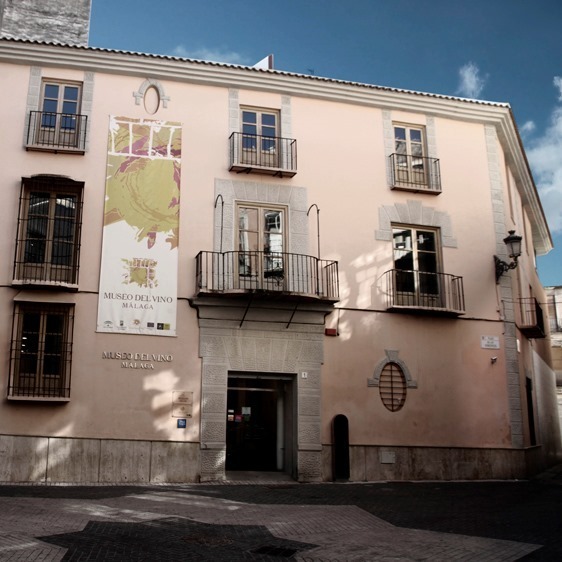
One of the things to do in Malaga is visit the Wine Museum, an 18th-century building located in the Plaza de los Viñeros.
This museum plays a key role in promoting the values of wine culture and its prestige.
It offers visitors a chance to explore the rich history of wine-making, focusing on local grapes, sultanas, climatology, and the geography that shapes the wine culture.
The Wine Museum, owned by the Regulating Council of the Designation of Origin “Malaga”, “Sierras de Malaga”, and “Raisins of Malaga”, provides an immersive experience where visitors can learn about and taste the best wines of the province.
It’s a unique stop on your list of things to do in Malaga for wine enthusiasts.
9. Glass and Crystal Museum
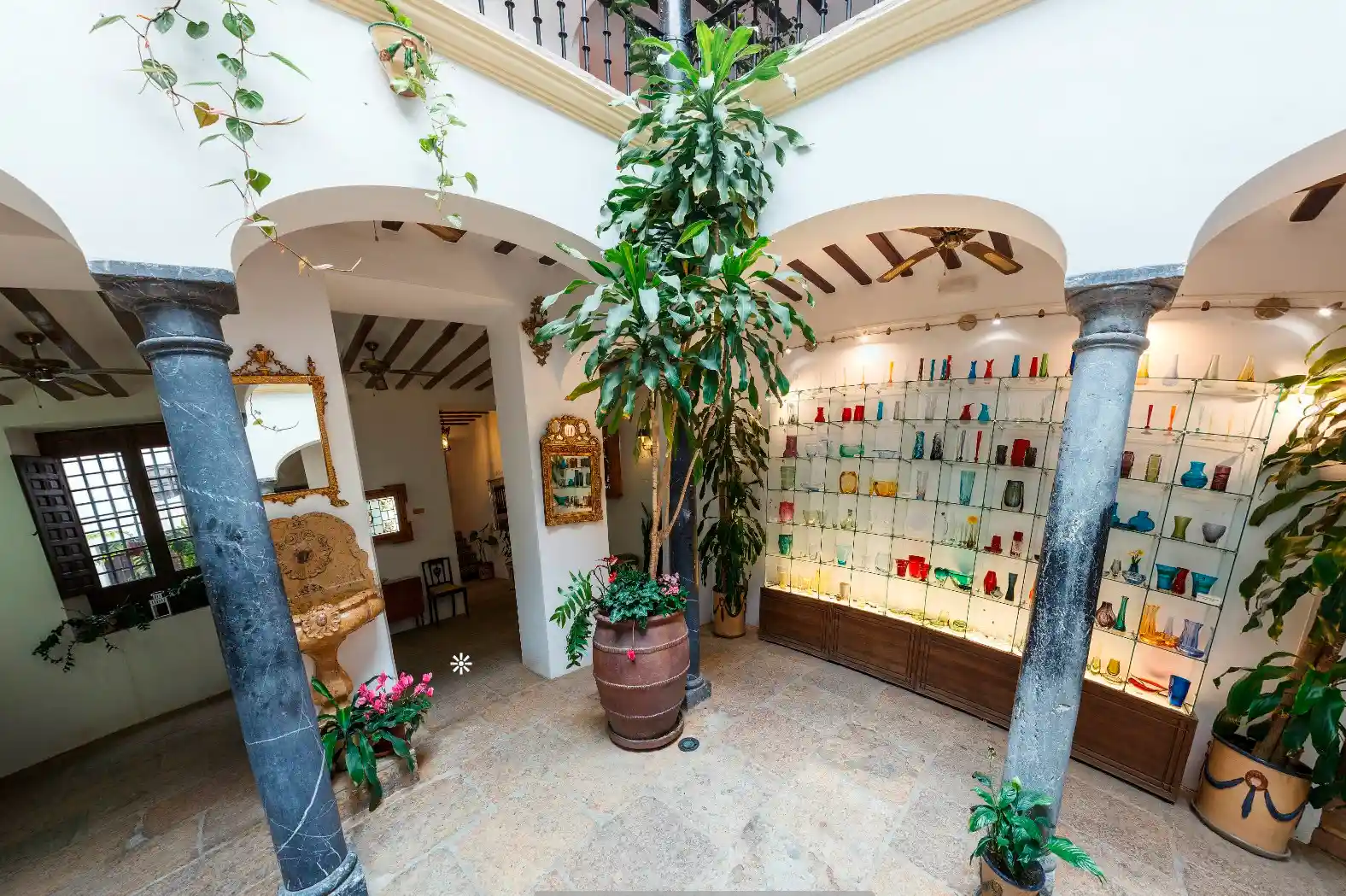
The Collection is housed in a carefully restored 18th century mansion, where we can trace the history of humanity through glass.
It another private collection among the things to do in Malaga, made up of more than 3,000 pieces of glass from different periods, accompanied by an important representation of paintings, furniture and decorative objects that correspond faithfully to each historical period they represent, creating an atmosphere that immerses us in the real domestic context in which the first owners lived.
A museum of decorative arts that aims to be a living entity that serves as an incentive to rehabilitate the old artisan quarter of San Felipe Neri, and a nucleus of reference and study for modern artisans.
Visiting the Museum of Glass and Crystal is among the things to do in Malaga and is housed in a three-storey 18th century building. The frescoes on the façade date from the middle of the 18th century and have the peculiarity of containing paintings of the continents in cartouches, in the Italian manner. The importance of the building lies in the fact that it is one of the few preserved 18th century houses belonging to the wealthy middle class.
It is fundamentally a collection of decorative arts, which also includes paintings, furniture, decorative objects, etc., where glass and crystal serve as a guiding thread to learn about European domestic life, from 6th century BC Greece to the present day. It also has an important representation of English stained glass from the 19th and early 20th centuries.
The exhibition consists of 16 rooms where the glass collection is exhibited, accompanied by an important representation of paintings, furniture and decorative objects, with each period, from the 18th century to the present day, distributed in a different room.
The glass collection, the most extensive and representative of the institution, presents excellent examples of some exquisite pieces from the Roman, Greek and Byzantine cultures, as well as pieces from the main European centres: Bohemia, Venice, Holland, London, La Granja, etc.
The period furniture includes celebrated examples of the most diverse origins. Lamps, mirrors, carpets and tapestries, all of them repositories of a long history, complete each of the rooms.
10. Plaza de la Merced
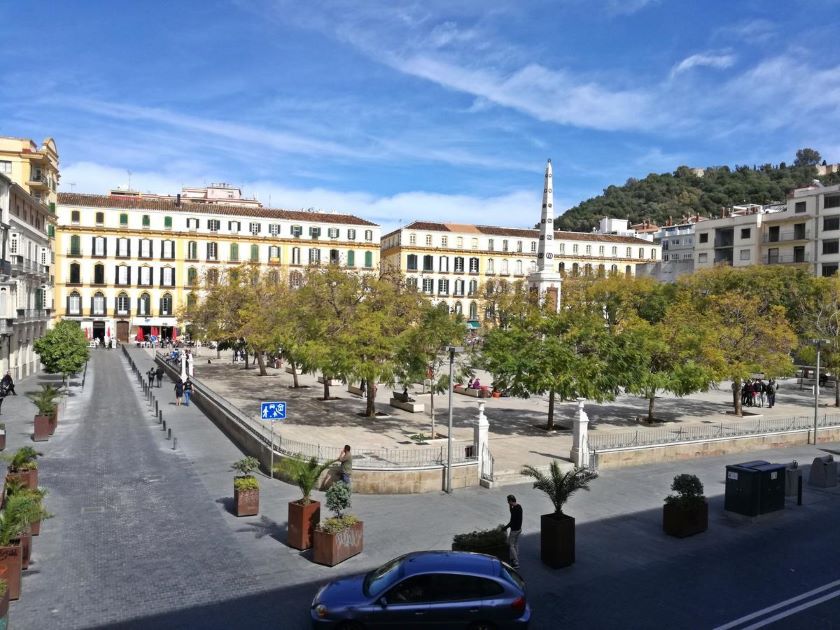
Also known by other names such as Plaza del Mercado or Plaza de Riego, going is one of the most beautiful things to do in Malaga. In its centre is the Monument to Torrijos, represented by a large obelisk that characterises this square.
It is also known for being the place where Picasso took his first steps, as the Picasso Foundation is located in the Casa de Campo, the houses that make up one of the sides of the square. Politicians such as General Riego, sculptors such as Fernando Ortiz, writers such as Juan José Relosillas, architects such as Gerónimo Cuervo and painters such as Bernardo Ferrándiz also lived here.
Paveros, milk sellers with their herds of goats, sellers of sweets, biznagas and jams, guitar players, maids and soldiers, revolved around the monolith which, since 1842, has stood in the tree-lined centre of the Plaza in homage to General Torrijos, whose slogans of freedom and justice were the reference point for that child called Pablo Ruiz Picasso.
And we cannot forget that in this setting, even today, as then, pigeons fly as the symbol of the paradigms announced on the cenotaph of the fallen soldier. They are the doves that Picasso, from his childhood until his death, painted – from the hands of his father. Now you know why is one of the things to do in Malaga.
11. Gibralfaro Castle

The Gibralfaro Castle was erected in the 14th century to guard the Alcazaba and its troops. Today it is one of the main things to do in Malaga and from its walls you can see breathtaking panoramic views of the city. Visitors can explore the castle or go inside the Interpretation Centre to discover its history.
Once considered the most impregnable fortress on the Iberian Peninsula, it has two lines of walls and eight towers. The outer wall is connected to the Coracha, zig-zag walls that climb up to the hill. The inner wall, on the other hand, allows a complete tour of the perimeter of the fortress.
Divided into two sections, the main courtyard houses the Interpretation Centre, where you can immerse yourself in the history of the castle through its inhabitants, highlighting the main tower, the Phoenician well and the baths. The Airón well, sculpted in living rock, is 40 metres deep.
The lower part, or parade ground, used to house troop barracks and stables. The most outstanding feature is the albarrana tower or white tower, visible from the northeast, which has a cistern, outbuildings and storerooms inside.
Its name, Jabal-Faruk or Lighthouse Mountain, comes from an ancient lighthouse located on its summit. Although it had a Phoenician and Roman presence, it was a Nasrid king who transformed it into an imposing fortress in 1340. During the Christian Reconquest, it was converted into a temporary residence by Ferdinand the Catholic after the victory and designated as a key element in the city’s coat of arms.
12. Picasso Museum
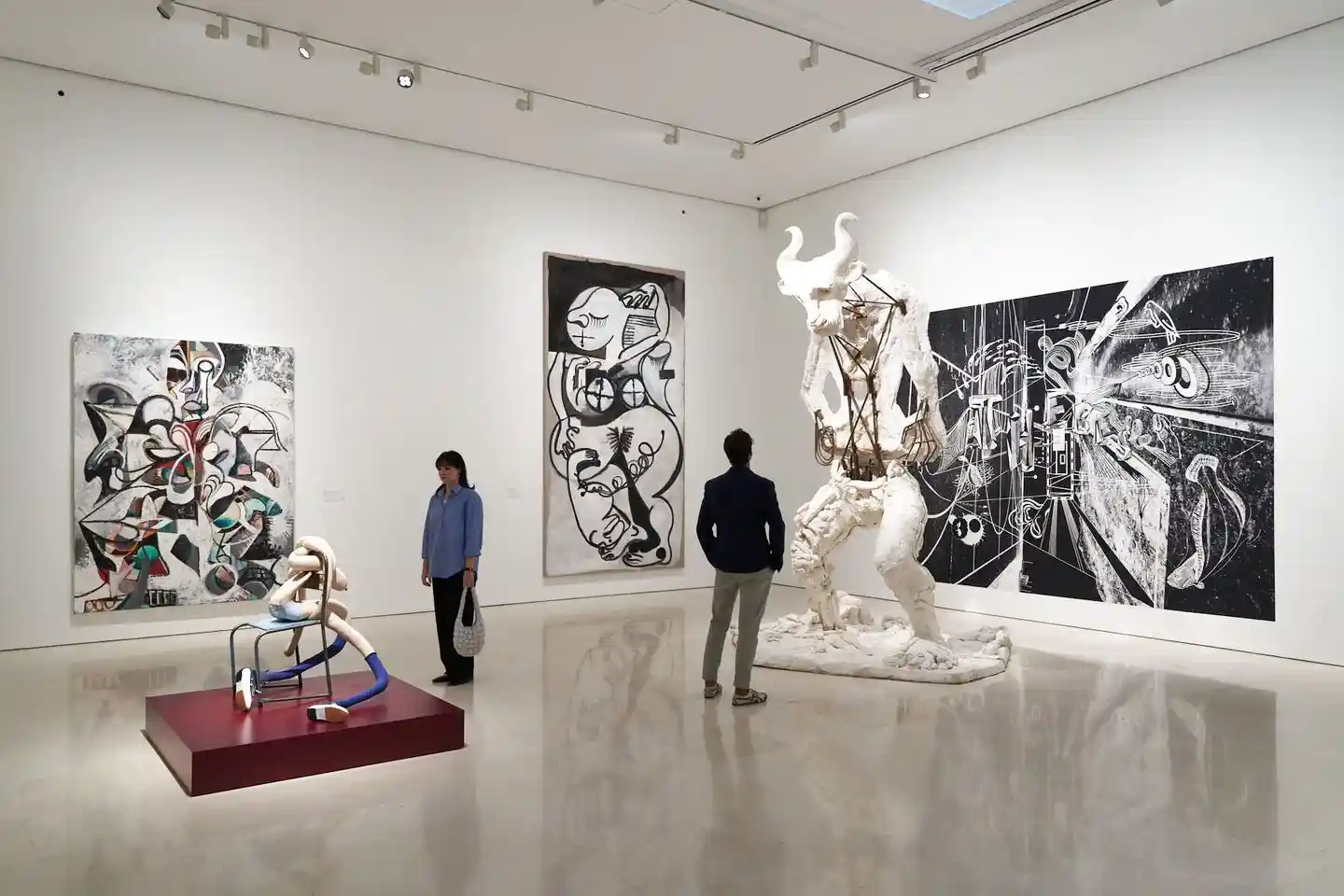
This centre responds to a wish of Pablo Picasso himself: that his work should be present in the city where he was born.
The Picasso Museum is located in the Palacio de Buenavista, a building representative of the Renaissance civil architecture of Andalusia. The permanent exhibition is made up of a selection of pieces from the private collection of two of his relatives, Christine Ruiz-Picasso and Bernard Ruiz-Picasso. The more than 200 works in the collection cover the different styles, materials and techniques developed by the brilliant painter. There are also temporary exhibitions, educational and cultural activities on subjects related to Picasso.
The collection, top in the thimgs to do in Malaga, is dedicated entirely to the work of Picasso, comprises more than 230 works of art including paintings, sculptures, drawings, graphic works and ceramics that show the revolutionary innovations of his career, as well as the wide variety of styles, materials and techniques that the artist renewed.
In the historic heart of the city, very close to the Cathedral and the Roman Theatre, the museum offers temporary exhibitions and organises various activities such as workshops, concerts, film seasons and guided tours.
13. Alcazaba of Malaga
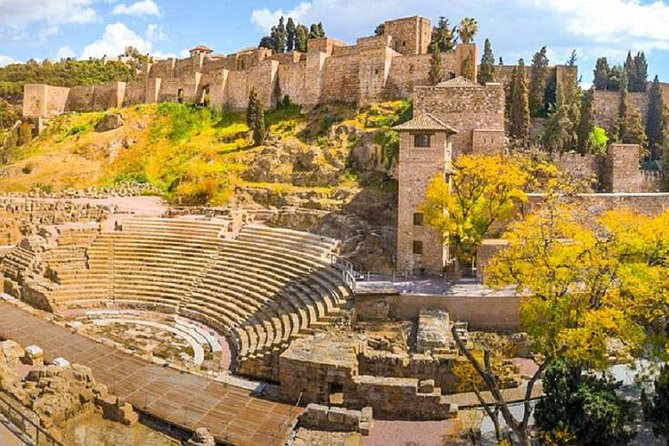
The Alcazaba is a fortress of great historical importance and another of the histoical things to do in Malaga. It stands as a tourist attraction that combines history and beauty. This Muslim citadel is strategically located at the foot of Mount Gibralfaro, adjacent to the Moorish defensive castle, connected by the sheltered corridor of walls known as La Coracha.
Situated in close proximity to the Roman Theatre and opposite the Customs building, the Alcazaba represents a fusion of Roman, Moorish and Renaissance cultures in a compact space, making this site exceptional in the things to do in Malaga.
The Alcazaba was built between 1057 and 1063 by order of the King of Granada, Badis. Throughout its history, the Alcazaba witnessed the rule of various dynasties, from the Almoravids to the Almohads, until its incorporation into the Nasrid kingdom in 1279 under Muhammad II.
Its Nasrid architecture fuses defence and aesthetics through rectangular courtyards, gardens and ponds, displaying the mastery of the Arab master builders in the manipulation of light and shadow in its interior spaces.
This Muslim military, top in the list things to do in Malaga, preserved as one of the most significant works in Spain, integrates defensive elements such as machicolations, watchtowers with arrow slits and crenellated walls, taking advantage of its strategic location to visually dominate the city.
Over the centuries, it has undergone multiple reconstructions, some as late as the 20th century, and can now be visited, displaying archaeological exhibits. During the initial excavations for its restoration, remains of Roman walls covered with reddish stucco and small pools dug in slate, used for the preparation of Garum, a fish paste made by the Romans, were found. A dungeon was also discovered where Christian female captives who worked during the day were kept.
14. Roman Theatre
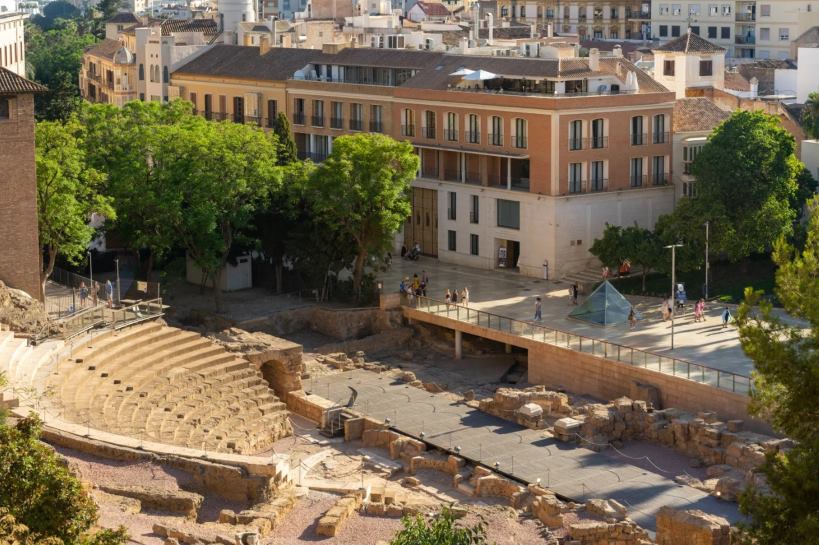
One of the key things to do in Malaga is visit the Roman Theatre, which is the main preserved vestige of the Roman presence in the city.
Built in the early 1st century AD, this theatre was part of a series of public buildings meant to transform the city. It was constructed over the remains of a Republican-era bathhouse, incorporating parts of these ancient structures into its design.
The Roman Theatre, which has a significant portion of its seating tiers and decorative elements intact, is a stunning historical site to explore.
Things to do in Malaga also include visiting this medium-sized theatre that retains its beautifully decorated orchestra, scaena, and scenic apparatus. The theatre, which was used for two centuries before being abandoned in the 3rd century AD, has been meticulously excavated since its rediscovery in 1951. Visitors can now explore the site, which includes an interpretation centre that provides deeper insight into its historical significance.
When you’re in Malaga, don’t miss the chance to see the Roman Theatre. It offers an enriching look at the city’s Roman heritage and is a must-visit for history enthusiasts, making it one of the top things to do in Malaga.
15. Museum of Malaga
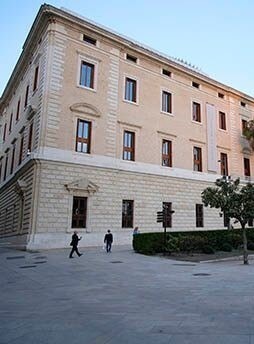
The Museum is a state institution managed by the Junta de Andalucía, the result of the administrative union in 1972 of two former museums: the Museum of Fine Arts and the Archaeological Museum. It has more than 15,000 archaeological collections and an extensive art collection of 2,000 works from the 15th century to contemporary art. It is one of the largest provincial museums in Spain and Andalusia.
It is housed in the Palacio de la Aduana, a neoclassical building designed in 1788, reminiscent of Italian Renaissance palaces. In addition to being the Maritime Customs House, it was also the Tobacco Factory and administrative headquarters, housing the Subdelegation of the Provincial Government.
In recent decades, pieces from the excavations carried out by the University of Malaga have been added. In the same way, various batches have been deposited from preventive and emergency archaeological interventions that have been carried out in Malaga over the last 20 years. The Museum exhibits a succession of themes from prehistory to contemporary art, giving the Customs House itself an important role.
The archaeological collection, organised into seven thematic blocks, stands out as one of the top things to do in Malaga, such as the Lorinigiana collection, the Neanderthal bone remains from Zafarraya, the lithic collections from Nerja, the grave goods from the Dolmens, the Phoenician tombs from Chorreras or Calle Refino, the Roman mosaic of the Birth of Venus from Cártama or the ceramic and medieval woodwork from the Alcazaba.
The historical avant-garde also has a reference point in the collection of José Moreno Villa, Joaquín Peinado and the graphic work of Picasso.
16. Malaga Park
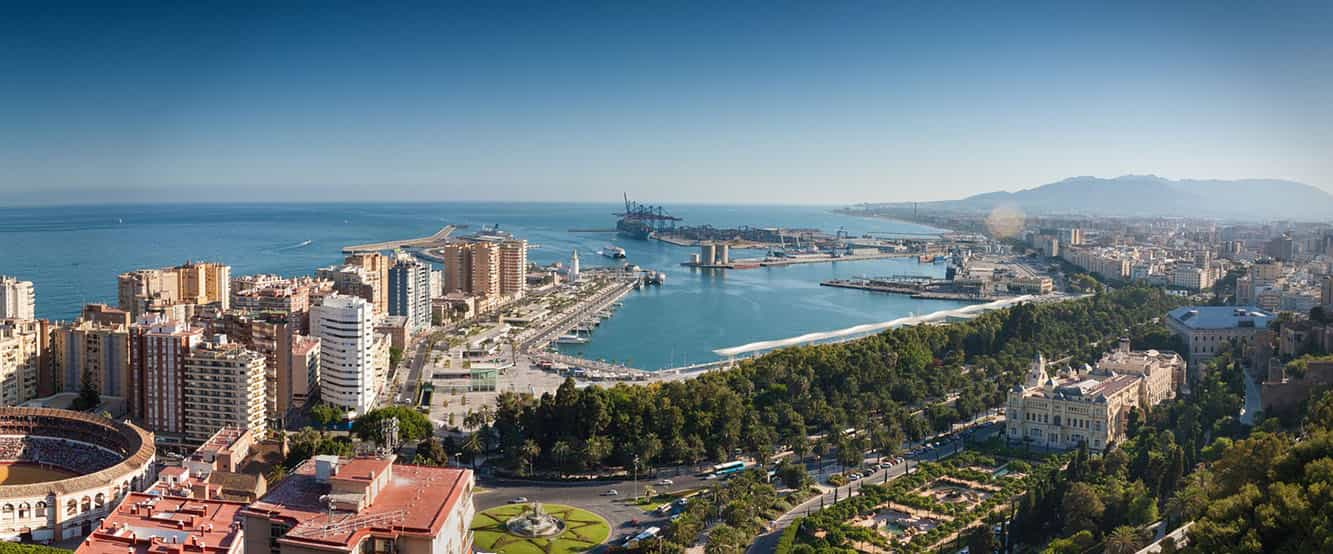
The Park is located in the centre of Malaga and stands out for its great historical value, as it is directly related to the history of the 19th century, having its origin in a law of 1896 inspired by Cánovas del Castillo.
Its plantation has been enriched over time with species of different origins and for its construction land was reclaimed from the sea at the end of the 19th century, with an extension of 3.3 hectares in which a great diversity of vegetation can be observed in which tropical and subtropical species stand out, as well as palm trees, dragon trees, plane trees and ficus.
Visitors can enjoy its numerous fountains and monuments. Its proximity to the “Palmeral de las Sorpresas”, makes it an emblematic place, as well as being classified as one of the best open subtropical gardens in Europe and a must do in our things to do in Malaga.
😮💨 Have all these places left you wanting more? Don’t worry — the best part is you don’t have to plan a thing.
With DareMapp, everything’s ready for you: an interactive self-guided tour on your phone to discover Málaga at your own pace, without rushing or missing a thing.
Forget big groups, tight schedules and last-minute plans.
17. Malaga Street Lamp.
La Farola de Málaga is one of the oldest lighthouses in Spain, surpassed only by the 2nd century Tower of Hercules (A Coruña), 14th century Porto Pí (Mallorca), 16th century Cabo Roche (Cádiz), Carbonera and Punta Carnero in the 17th century (Cádiz)
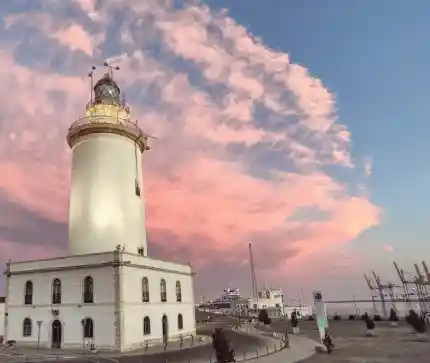
The absence of a reliable lighting system at the entrance to the port that could guide ships at night was one of the major problems that dragged these infrastructures down for many years.
The arrival of the 18th century enabled engineers to design a much-needed stone lighthouse, although it is true that nothing was done at that time: at most, some very handcrafted cranes supported a lantern with oil lamps that advanced towards the head of the quay as far as the eastern jetty did.
It was in the following century when, after the end of the War of Independence, the engineer Joaquín María Pery began the construction of the current Malaga street lamp in a very professional manner.
18. Malagueta Beach

The Malagueta beach, a mandatory visit in the things to do in Malaga, is located between the port and the beach of La Caleta. This beach is named after its namesake neighbourhood, La Malagueta, which is located in the centre of the city. During the 19th century it was occupied by sugar factories, wine cellars, shipyards and other types of industrial production. At the end of the century the Hospital Noble and the Plaza de Toros were built, and the transformation to the current district of La Malagueta began.
This beach is one of the many that were regenerated along the coast of Malaga. With dark sand, it is 1,200 metres long and 45 metres wide on average, and usually has a moderate swell. This beach has been awarded the Blue Flag 2021.
When the hot season begins, you can hire sun loungers and parasols, as well as nautical equipment. It also has a children’s play area, making it an ideal beach to enjoy with the family and another top in ourthings to do in Malaga.
Tips to travel with peace of mind
When everything is ready — flights, hotel, itinerary — there are only two more things you need to travel worry-free: a good internet connection and reliable travel insurance.
✔ Get an international eSIM already set up on your phone. No need to change your SIM card, search for Wi-Fi, or pay for roaming. Activate it before your trip and enjoy unlimited data from the very first minute, wherever you are.
✔ Take out travel insurance that includes medical assistance 24/7, coverage for cancellations, theft, and — most importantly — advance payment of all medical expenses without you having to pay, wherever you are. Because in a new country, what matters most is feeling safe. Moreover, DareMapp offers you a 5% discount.
Both services can be arranged online in less than 5 minutes, with no paperwork required.
Don’t leave it to the last minute!
👉 Activate your Holafly eSIM at the best price here.
👉 Take out your travel insurance with IATI and get a 5% discount.
🌄 Ready for more adventures beyond Málaga?
Don’t just stick to the city — explore its surroundings too.
With DareMapp, you’ll get a complete guide with excursions, local tips, travel advice and everything you need to make the most of every corner like a true traveler.
Excursions and things to do in Malaga: Exploring Andalusian Treasures.
Discover these unique things to do in Malaga, because the city not only offers you the beauty of its beaches and the vibrant life of the city. Just a few kilometres from the capital, there are countless charming villages that will win you over with their beauty, history and traditions.Here’s a selection of amazing things to do in Málaga for all tastes!:
- Museo de la Imaginación
A place where reality and illusion merge! This interactive museum is perfect for families and photography lovers. Get ready to challenge your senses with mind-bending exhibits and optical illusions—one of the most fun things to do in Málaga. Check your tickets here. - Museo Automovilístico y de la Moda
A must for vintage car and fashion enthusiasts, this museum showcases an extraordinary collection of classic cars alongside haute couture pieces. It’s one of the most unique things to do in Málaga, combining art, history, and innovation. Check your tickets here. - Bioparc Fuengirola
If you love wildlife, visiting Bioparc Fuengirola is one of the top things to do in Málaga for animal lovers. This zoo focuses on conservation and recreates natural habitats for its residents, from tigers to gorillas. Check your tickets here. - Espectáculo Flamenco Málaga
No visit to Andalucía is complete without experiencing flamenco! Enjoy an authentic flamenco show in Málaga, filled with passion, rhythm, and spectacular performances—one of the most traditional things to do in Málaga at night. Check your tickets here. - SEA LIFE Benalmádena
Dive into the marine world at SEA LIFE Benalmádena, where you can walk through an underwater tunnel, see sharks up close, and even interact with sea creatures. It’s a fantastic plan for families and one of the best things to do in Málaga with kids. Check your tickets here. - Teleférico Benalmádena
For breathtaking views, take the Teleférico Benalmádena up to Monte Calamorro. Enjoy panoramic sights of the coast and, on clear days, even glimpse the African coastline. Definitely one of the most scenic things to do in Málaga! Check your tickets here. - Mariposario Benalmádena (Skip-the-Line Ticket)
Surround yourself with exotic butterflies in Europe’s largest butterfly park! The Mariposario Benalmádena offers a tropical paradise where you can observe these colorful creatures up close—one of the most peaceful things to do in Málaga. Check your tickets here. - Hammam Al-Andalus (+ Massage)
For the ultimate relaxation, visit Hammam Al-Andalus Málaga, an authentic Arabic bath where you can unwind in thermal pools and enjoy a soothing massage. If you’re looking for relaxing things to do in Málaga, this is your spot. Check your tickets here.
In the surroundings:
- TORREMOLINOS
- BENALMÁDENA: Enjoy the views from the town’s cable car by purchasing your tickets through this link. You can also get tickets to visit SEA LIFE Benalmádena and the Butterfly Park of Benalmádena.
- MIJAS
- ANTEQUERA
- FUENGIROLA
From cultural gems to thrilling attractions, these things to do in Málaga offer unforgettable experiences. Which one will you try first?
Remember that with DareMapp you can make a multitude of guided tours in an interactive way, a fun tourism for the main destinations.
Remember that with DareMapp you can take a multitude of interactive guided tours, including many of these “Things to do in Malaga in 1 day”, a fun tour of the main destinations.
What better way than travelling and discovering while learning in a fun way? Visit our blog to discover lots of tourism tips.


